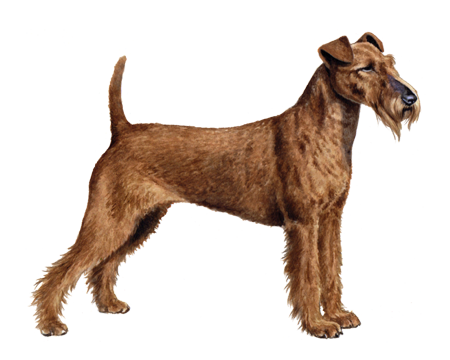
Sealyham Terrier
Sealyham Terriers are high-spirited, affectionate, and loyal to those they love. Though brave, alert, and independent, they're friendly toward other pets and children. As a result, the Sealyham Terrier makes a wonderful family dog.
Interested in discovering if your dog is a Sealyham Terrier?
Check out Wisdom Panel's DNA tests.

Sealyham Terrier Traits
General Appearance
Low to the ground, the Sealyham Terrier has short legs that allow it to be fast and agile while hunting small game.
Coat and Colouring
The Sealyham Terrier has a wiry double coat and is generally white. But black, lemon, tan, and badger-colored markings on the head and ears are possible.
Distinctive Physical Traits
Notable features of the Sealyham Terrier include a slightly domed head and long bangs.
Sealyham Terrier Temperament
Sealyham Terriers are hardy souls full of character and spunk. Seeming to have a sense of humor, they can also sometimes be a bit stubborn.
Because of their size and personality, they're well-suited for both city and country life. Sealys are good with children, too. But all interactions between kids and dogs require adult supervision.
Sealys may be reserved or suspicious around strangers, and they often don't get along well with other dogs. Because of the breed's hunting background, they may bark, dig, and chase wildlife.


Sealyham Terrier History
Captain John Edwards developed the Sealyham Terrier between 1850 and 1891 at his estate in Wales. He wanted to create a breed that would excel at hunting small game—such as badgers, otters, and foxes—above and below ground.
Experts think Edwards bred the Basset Hound, Bull Terrier, Fox Terrier, West Highland White Terrier, and Dandie Dinmont Terrier to produce the Sealyham Terrier. The breed came to the United States in 1910 and earned recognition from the American Kennel Club a year later. Today, Sealyham Terriers are most popular in England and South Africa.
Sealyham Terrier Care
Nutrition
Sealyham Terriers need a high-quality, age-appropriate (e.g., puppy, adult, senior) diet. To keep your Sealy at a healthy weight, monitor how much they eat, measure out meals, and reduce portions if necessary. Also, remember that giving too many treats can contribute to obesity.
Grooming
The Sealyham Terrier's double coat doesn't shed. But the abundant hair on the dog's legs and body tends to mat easily. Combing and brushing every few days can help prevent this.
Trimming nails, cleaning ears, and brushing teeth should also be part of your Sealy's grooming routine.
Exercise
Sealyham Terriers may be less energetic than other terriers. But they still need moderate exercise. Walking down the block, fetching a ball, and playing tug-of-war are all acceptable ways to get your Sealyham off the couch.
The breed also seems to enjoy dog sports—such as agility, earthdog trials, tracking, flyball, and obedience. If playing in a non-fenced area, be sure to use a leash (or you'll be playing chase, whether you like it or not).
Training
You can overcome any stubborn or strong-willed tendencies in your Sealyham Terrier by using motivational tools—such as treats and favorite toys—in reward-based training.
It's also wise to start obedience and socialization classes at an early age. This creates safe opportunities for your pup to mingle with other dogs and learn good manners. With a little patience, your Sealy should become a dependable, obedient companion.

Sealyham Terrier Genetic Health Conditions
-
Chondrodystrophy (CDDY) and Intervertebral Disc Disease (IVDD) Risk
Chondrodystrophy (CDDY) is a skeletal disorder characterized by shortened limbs and abnormal early degeneration of the spinal discs, or intervertebral disc disease (IVDD), which predisposes to disc herniation.
-
Primary Lens Luxation
Primary Lens Luxation (PLL) is a condition that can cause the lens of the eye to become loose and eventually displace. The disorder is caused by degeneration of the fibers that hold the lens in place.
Knowing if your Sealyham Terrier is a carrier or at-risk for these conditions can help you and your veterinarian plan for your pup's lifelong care. With Wisdom Panel™ Premium, you can get results for over 200 genetic health tests.
Breed Group
Terrier
The Terrier Group ancestors were bred to hunt and kill vermin. They are often characterized as feisty and energetic dogs whose sizes range from fairly small to much larger.
Resources
https://www.akc.org/dog-breeds/sealyham-terrier/
Reviewed 26 July 2020 by Cindy Elston, DVM, MPH































































